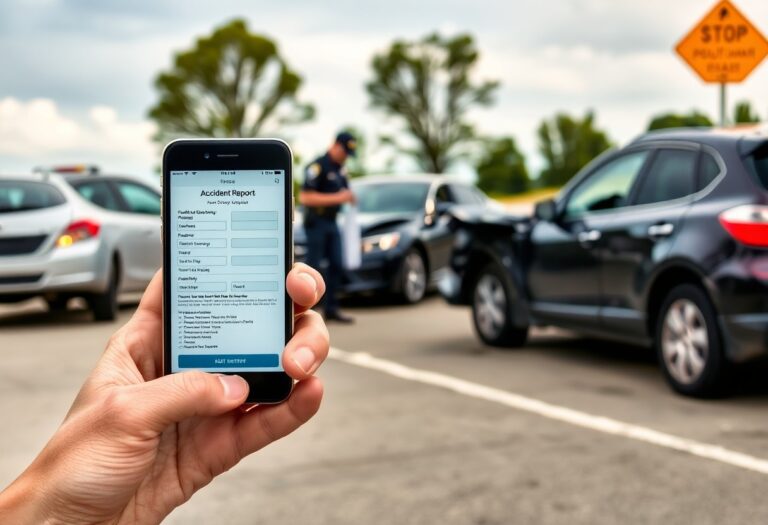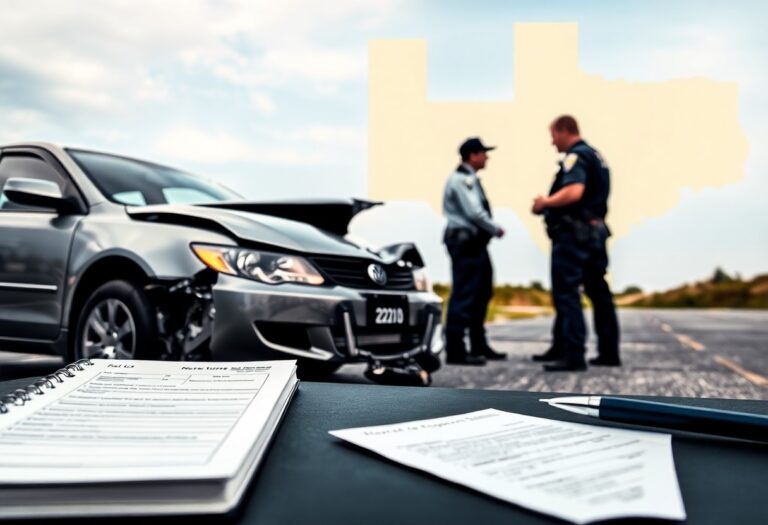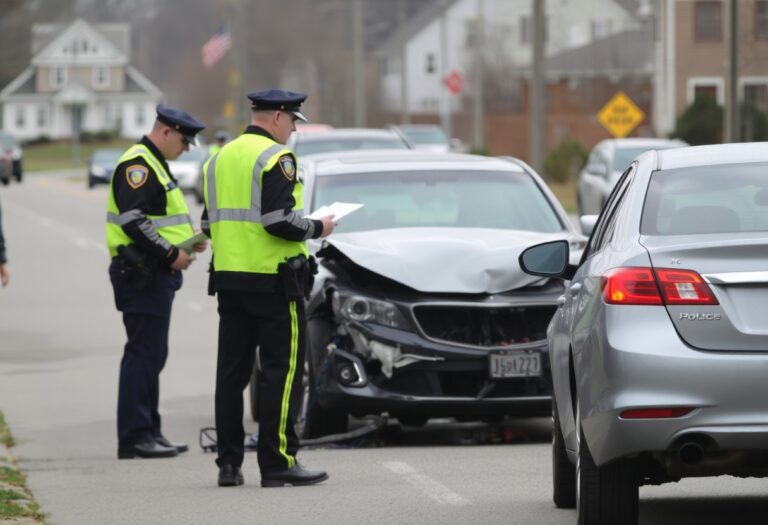Just as you navigate the complexities of daily life, understanding how to obtain your crash report in Wright County, Minnesota can greatly ease your experience after an accident. Whether you need it for insurance claims, legal purposes, or personal records, knowing the steps to request this document efficiently is vital. This guide will provide you with all the information you need to request your crash report quickly and effectively, ensuring you have the necessary documentation at your fingertips.
Navigating the Legal Labyrinth: Understanding Crash Report Availability
Obtaining a crash report in Wright County requires you to understand specific legal aspects surrounding its availability. Crash reports are typically accessible to the involved parties, and in some cases, the general public. The protocol can vary based on the nature of the accident, whether it resulted in injuries, fatalities, or merely property damage. It’s imperative to familiarize yourself with the requirements and potential restrictions before initiating your request.
Definitions and Key Terms
Familiarity with key phrases enhances your understanding. Crash report refers to the official documentation detailing an accident’s circumstances. Public access indicates that certain reports may be obtainable by anyone, not just the involved parties. Involved parties includes individuals directly involved in the crash, such as drivers, passengers, or pedestrians affected.
Legal Framework Governing Crash Report Access
The legal structure for accessing crash reports in Minnesota is primarily outlined in Minnesota Statutes, Chapter 169. These statutes define who can request reports and under what circumstances. Generally, you will find that reports are often made available to involved parties, law enforcement agencies, and sometimes insurance companies.
This legal framework establishes the guidelines for how crash reports are to be handled and disseminated. Specific provisions may limit access to sensitive information, protecting personal data while ensuring transparency. For instance, reports involving ongoing investigations or minor accidents may have restricted access until those investigations are finalized or administrative matters addressed. Navigating these regulations effectively allows you to secure your crash report while complying with state laws. Understanding these stipulations can facilitate a smoother request process and hasten your access to imperative information.
The Step-by-Step Process for Requesting Your Crash Report
Requesting your crash report in Wright County can be a straightforward process if you follow the right steps. You’ll first need to identify the appropriate authority, gather the necessary documentation, and choose your submission method. Whether you prefer to take care of this in person, online, or via mail, each route has its own requirements and advantages.
Identifying the Right Authority
Your initial step should involve determining the right authority responsible for crash reports. In Wright County, the Wright County Sheriff’s Office typically manages these reports. Ensuring you contact the correct department will save you time and ensure efficient processing of your request.
Required Documentation and Information
To smoothly acquire your crash report, specific documentation and information is imperative. You may need to provide details such as your name, contact information, the date of the incident, and the names of other parties involved. Having this information at hand will help streamline your request.
Alongside personal identification, other documents such as a copy of your driver’s license or proof of involvement in the incident will ensure your request is taken seriously. This detailed information allows safeguarding sensitive data, making sure only authorized individuals access these reports.
Submission Methods: Online, In-Person, or Mail
You can submit your request for a crash report through various methods, including online applications, in-person visits, or by mailing your request. Each method offers different conveniences, depending on your preferences and availability.
Utilizing the online submission option can save you time, particularly if you have a busy schedule. If you choose to request in person, you can ask questions directly and clarify any uncertainties on the spot. Mailing your request may take longer but is ideal if you’re unable to visit in person. Each method provides flexibility, enabling you to choose based on your circumstances.
Common Pitfalls to Avoid When Requesting Crash Reports
While obtaining your crash report in Wright County may seem straightforward, there are common pitfalls that can delay or complicate the process. Being aware of these issues can save you time and frustration, allowing you to focus on more important matters.
Incomplete Forms and Their Consequences
Submitting an incomplete form is one of the most frequent mistakes that can hinder your report request. For instance, if you forget to fill in your contact information or the date of the incident, your request may be stalled or even denied, requiring you to start anew.
Misunderstanding Costs and Fees
The costs associated with obtaining crash reports can be vague, leading to surprises. Many individuals are shocked to find out about the processing fees that can accumulate, especially if requesting multiple reports or requiring expedited service.
Understanding the fee structure upfront is vital. In Wright County, the standard fee for a crash report typically ranges from $5 to $15. However, if you need certified copies or expedited processing, additional charges might apply. Always clarify the costs when making your request to ensure you aren’t caught off guard by unexpected expenses. Taking the time to review the fee schedule on the appropriate website will provide transparency and assist you in budgeting appropriately for the request.
Maximizing the Value of Your Crash Report
Your crash report is not just a document; it’s an vital tool that can provide valuable insights and information regarding your accident. Properly understanding and utilizing this report can strengthen your case, whether it’s for an insurance claim, legal proceedings, or improving your driving habits. By maximizing the value of your crash report, you can ensure that you minimize future risks and increase your chances of a favorable outcome.
How to Interpret the Findings
Interpreting the findings of your crash report requires careful attention to detail. Key components include the contributing factors, descriptions of events leading to the accident, and any citations issued. Focus on understanding how different aspects—like weather conditions or road design—affected the incident. Spotting patterns in the data can provide necessary context for your case.
Utilizing the Report for Legal and Insurance Purposes
Your crash report can play a critical role in both legal and insurance scenarios. Providing clear evidence that supports your claims can lead to more favorable settlements or court outcomes. In many cases, insurance companies rely heavily on these reports to determine fault and payout amounts. When you present a well-documented crash report, you put yourself in a stronger position for negotiations.
An effective strategy involves using the report to pinpoint liability based on the officer’s analysis. They will note key elements such as driver actions and road conditions, which can hold significant weight in insurance claims or court cases. Ensuring you have the correct documentation will aid in settling disputes regarding coverage and payouts, helping to avoid unnecessary delays in receiving reimbursements or compensation.
Boosting Personal Safety through Insights
Analyzing your crash report can reveal patterns that enhance your personal safety as a driver. For instance, recognizing common factors leading to accidents—like specific locations or times—can help you adjust your driving routes or times. This proactive approach enables you to make informed decisions that ultimately reduce your risk of being involved in another incident.
By consistently reviewing crash reports, you may uncover trends in your driving behavior that require adjustment. For instance, if your report notes frequent accidents at intersections, you can strategize to approach those areas more cautiously. Equipping yourself with this knowledge empowers you not only to drive defensively but also encourages continuous improvement in your driving habits. With each report, you gain the potential to enhance your overall safety on the road.
Real-Life Scenarios: The Importance of Accurate Crash Reports
Accurate crash reports can be the backbone of insurance claims and legal proceedings after an accident. These reports often detail the conditions of the crash, contributing to a fair assessment of liability. For instance, a well-documented report that includes witness statements and precise measurements can lead to faster resolution and help ensure that victims are fairly compensated for their losses. As you navigate the aftermath of a collision, recognizing the significance of accuracy in these reports can transform your experience and outcomes.
Case Study of Resolution through Proper Documentation
A recent case in Wright County involved a multi-vehicle pileup where thorough crash reports played a significant role in resolving disputes among the involved parties. The reports included key elements like road conditions, vehicle speeds, and eyewitness testimonies. This thorough documentation allowed the insurance companies to quickly assess each party’s liability, resulting in a fair and timely settlement.
Lessons Learned from Incomplete Data
The aftermath of an accident often highlights the challenges of relying on incomplete crash data. In one situation, a driver was unable to collect damages after a collision because critical details were missing from the report, such as the precise location of the impact and statements from bystanders. These omissions led to disputes about the events, frustrating the recovery process and prolonging resolution.
Incomplete crash reports can hinder your ability to efficiently navigate the complexities of insurance claims and legal proceedings. One driver, for instance, faced significant delays and financial stress because their crash report lacked important details regarding the other driver’s actions. The absence of a clear narrative forced insurance adjusters to dig deeper, resulting in prolonged negotiations and increased frustration. Lessons from this experience underline the necessity of ensuring that every piece of information is recorded accurately, as well-documented reliability can expedite processes and minimize loss. Always verify that your crash report is comprehensive to avoid similar pitfalls.
Conclusion
Now you can easily request your crash report in Wright County, Minnesota, allowing you to stay informed and take necessary actions post-accident. By following the streamlined procedures, you can obtain all pertinent information swiftly and efficiently. Whether it’s for legal matters or personal records, understanding how to access your crash report empowers you to manage your situation better. Don’t hesitate to utilize the available resources for a seamless experience.













